Applicable only to Type L Ramps
Note
Driveway kerbs connect to public roads.
You cannot simply place non-conforming ramps there, eg. steel ramps, pieces of timber, or fully covered rubber ramps.
Non-conforming ramps cause tripping, damage to wheels, drainage blockage etc. Council may fine and/or ask for removal.
Background
We designed the Type L ramps after consulting with some local councils.
Other than the JLC Type L ramps installed in the manner prescribed – Installation Method – we do not know of another supplier who can offer a ramp product which offers better council compliance.
Please do confirm with your local council.
The installation of these ramps remains a matter between yourself and your local council.
For those wanting to read more …
What are the standards required ?
Example : An example of a council grid crossing standard: Grid Crossing
From our discussions with council, we conclude the following.
- a top opened 150mm channel for drainage (see footnote ***)
- tapered ends to mitigate hazard of tripping
- dimensions of height and width enough only to perform the task to minimise danger to road users
JLC Driveway ramps conform
Our design allows for a fully top opened 150mm channel GRID-GAP for drainage. This conforms to council standards requiring a 150mm fully opened non-obstructed-from-view channel in order for unrestricted flow of water, less chance of blockage, clear visual inspection and easy blockage clearance.
The JLC Ramps …
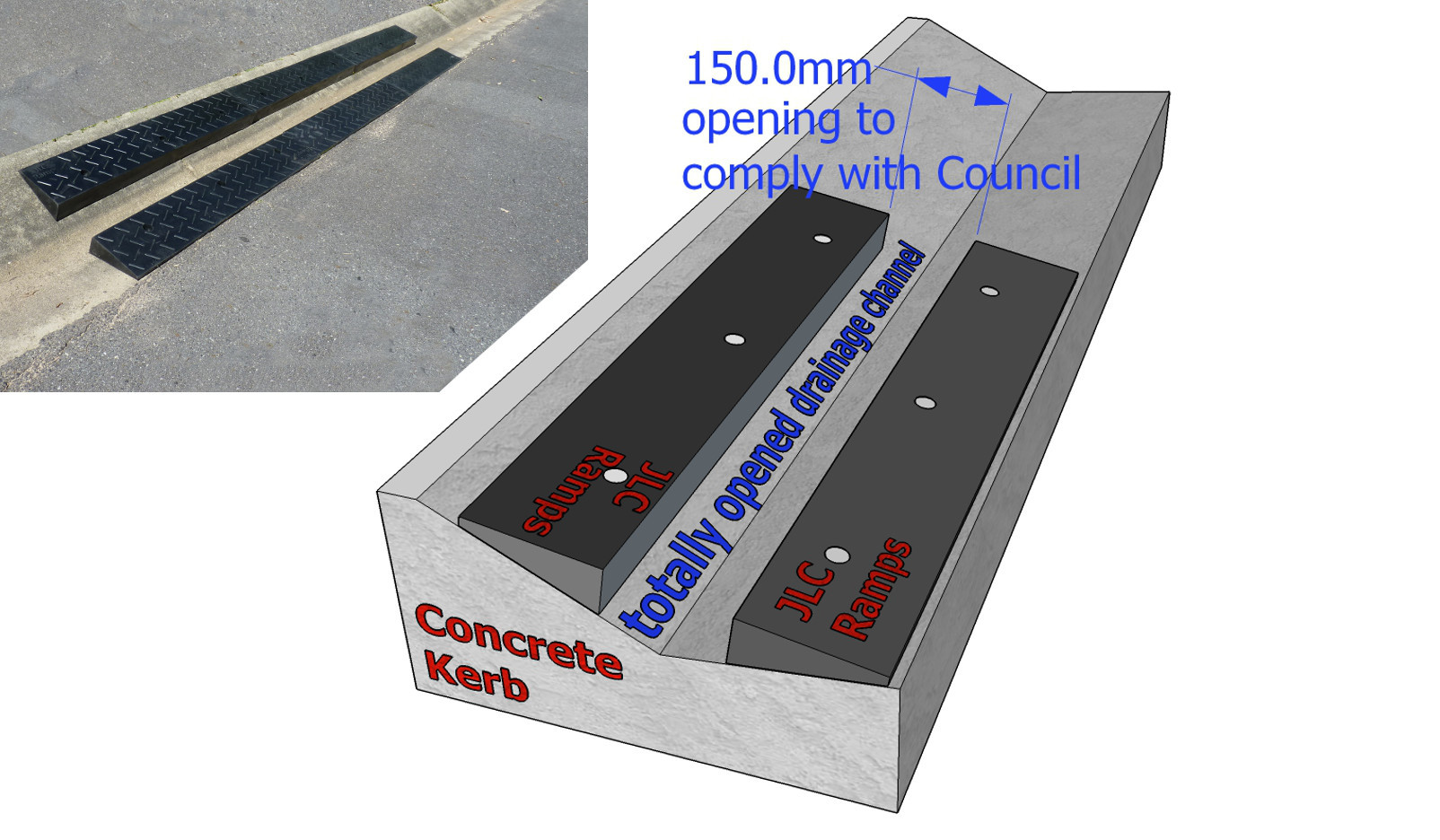
Other rubber ramps or steel plates may have a opening to allow water flow, but this opening is closed from the top – local councils object to the use of these ramps.
An example of ramps that do not conform …
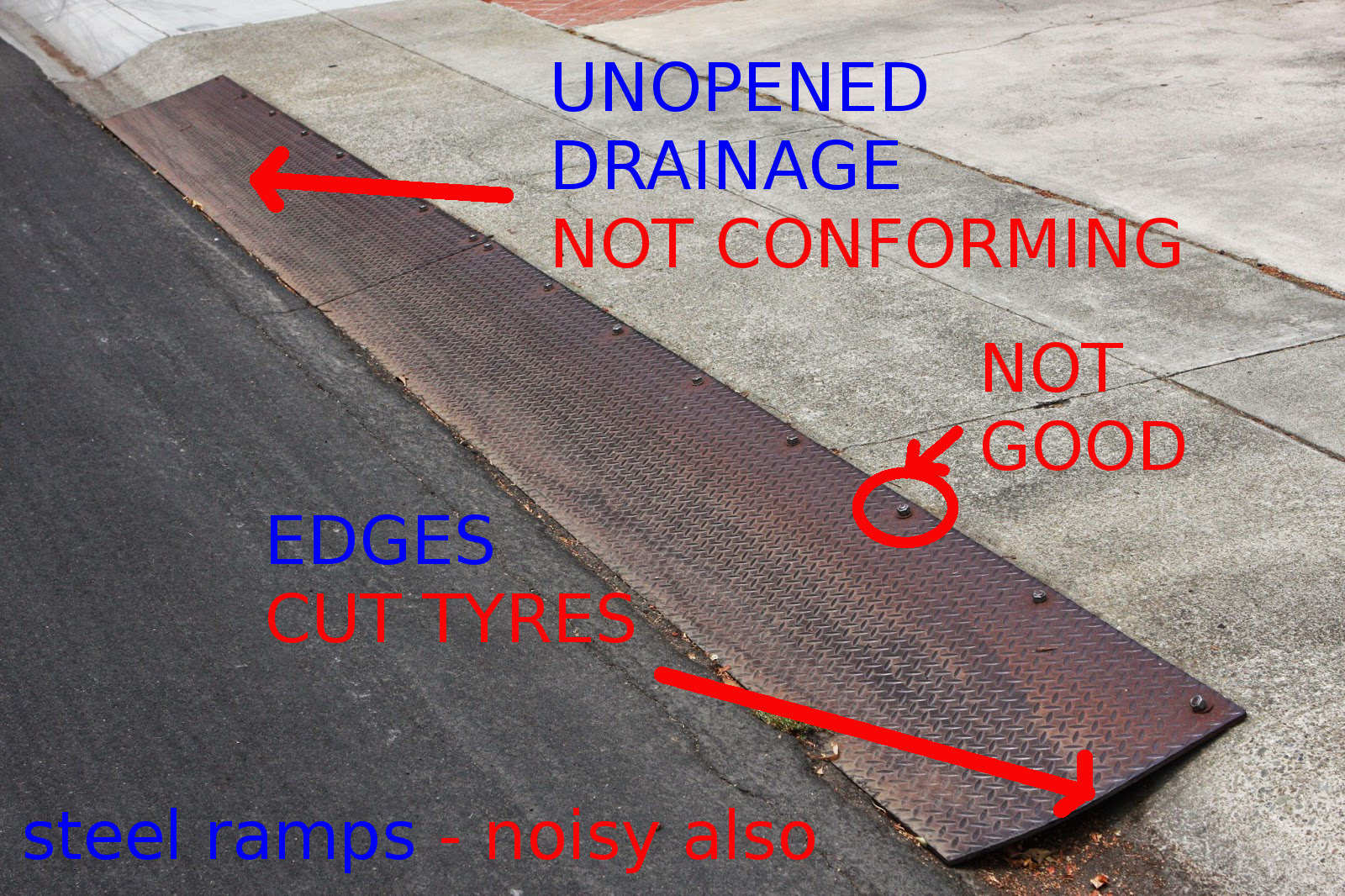
Local councils are against putting objects on roads which creates a tripping hazard. Any abrupt rise from the road facing incoming traffic must be avoided. A reasonable slope to reduce this risk must be in place.
To satisfy this, we offer end caps which provides a taper to the ends. The transition in height provided by the 33.5 degree slope on our end caps is even more gradual than some council structures placed on roads facing incoming traffic. Below is a diagram of one of the end caps.
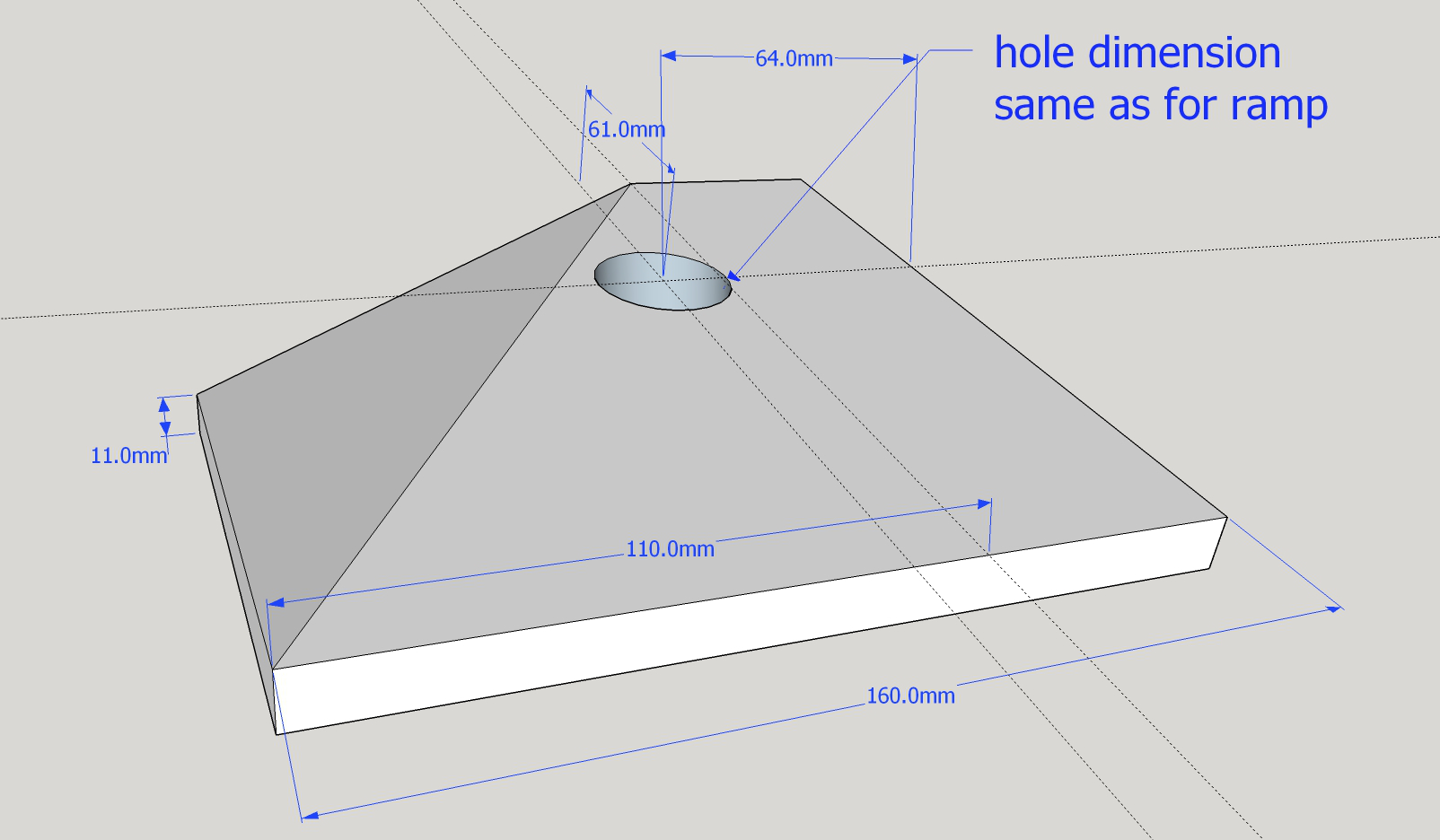
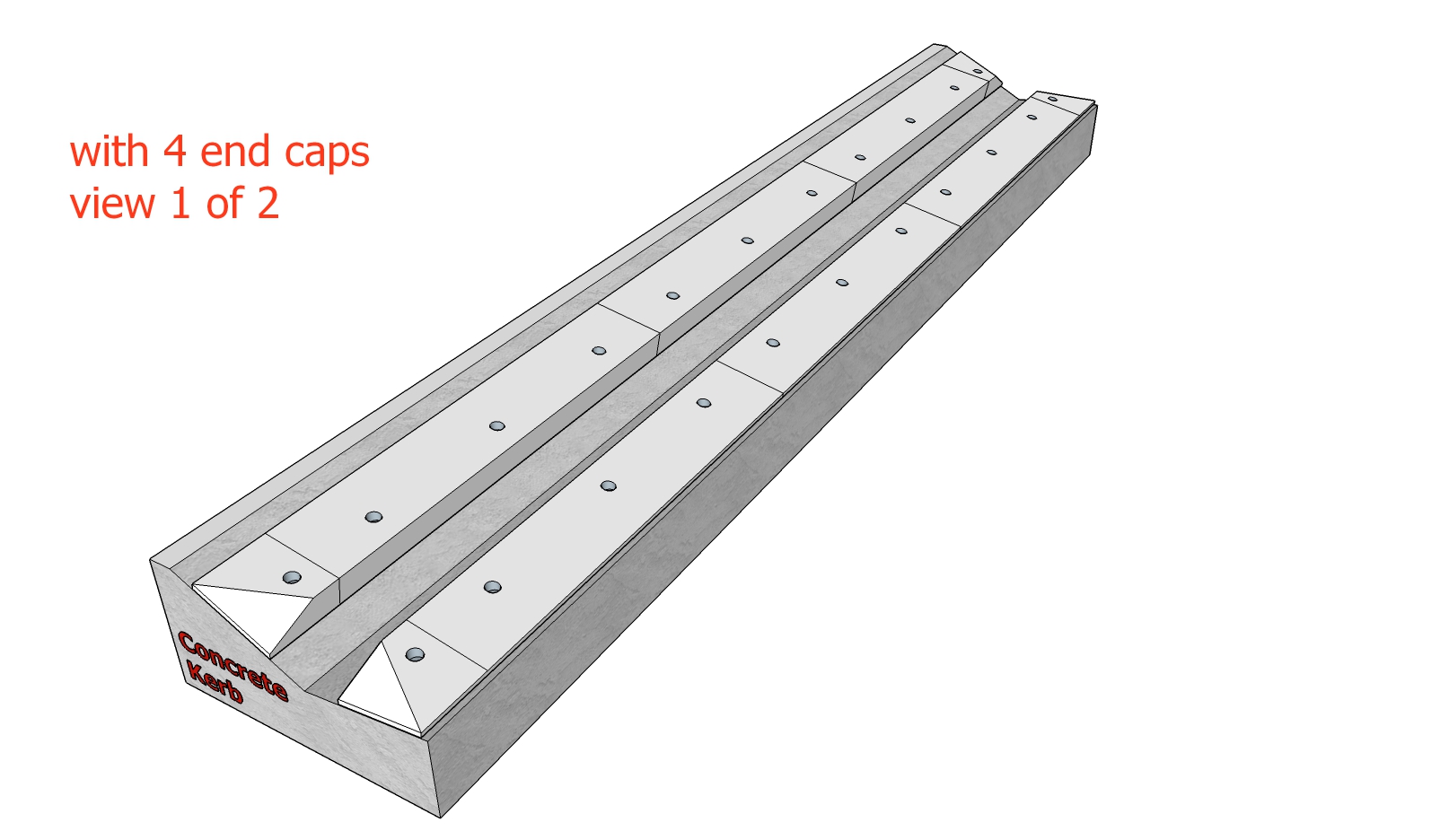
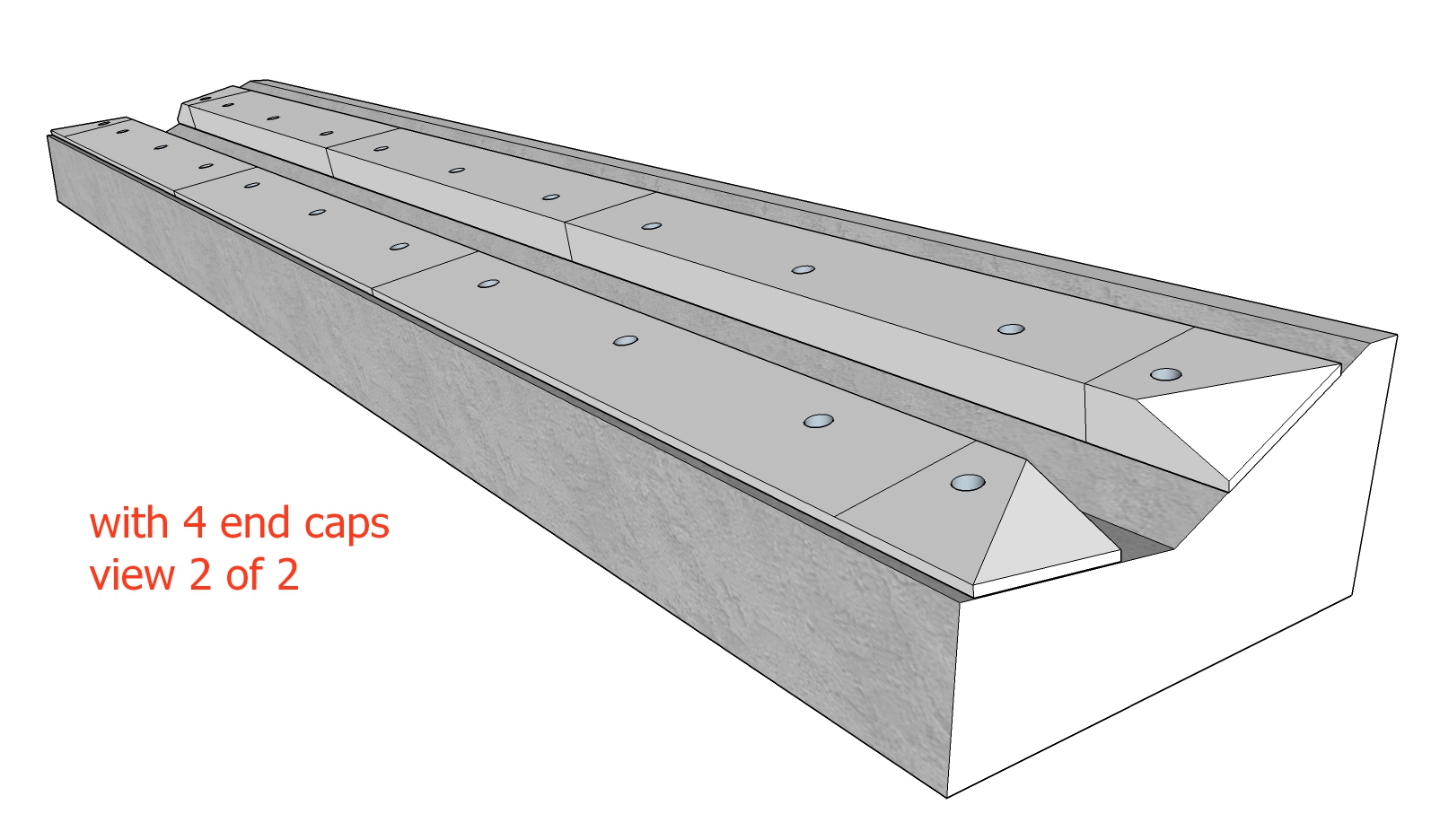
JLC Driveway Ramps are slim and occupy only the minimum amount space required to fulfill its purpose.
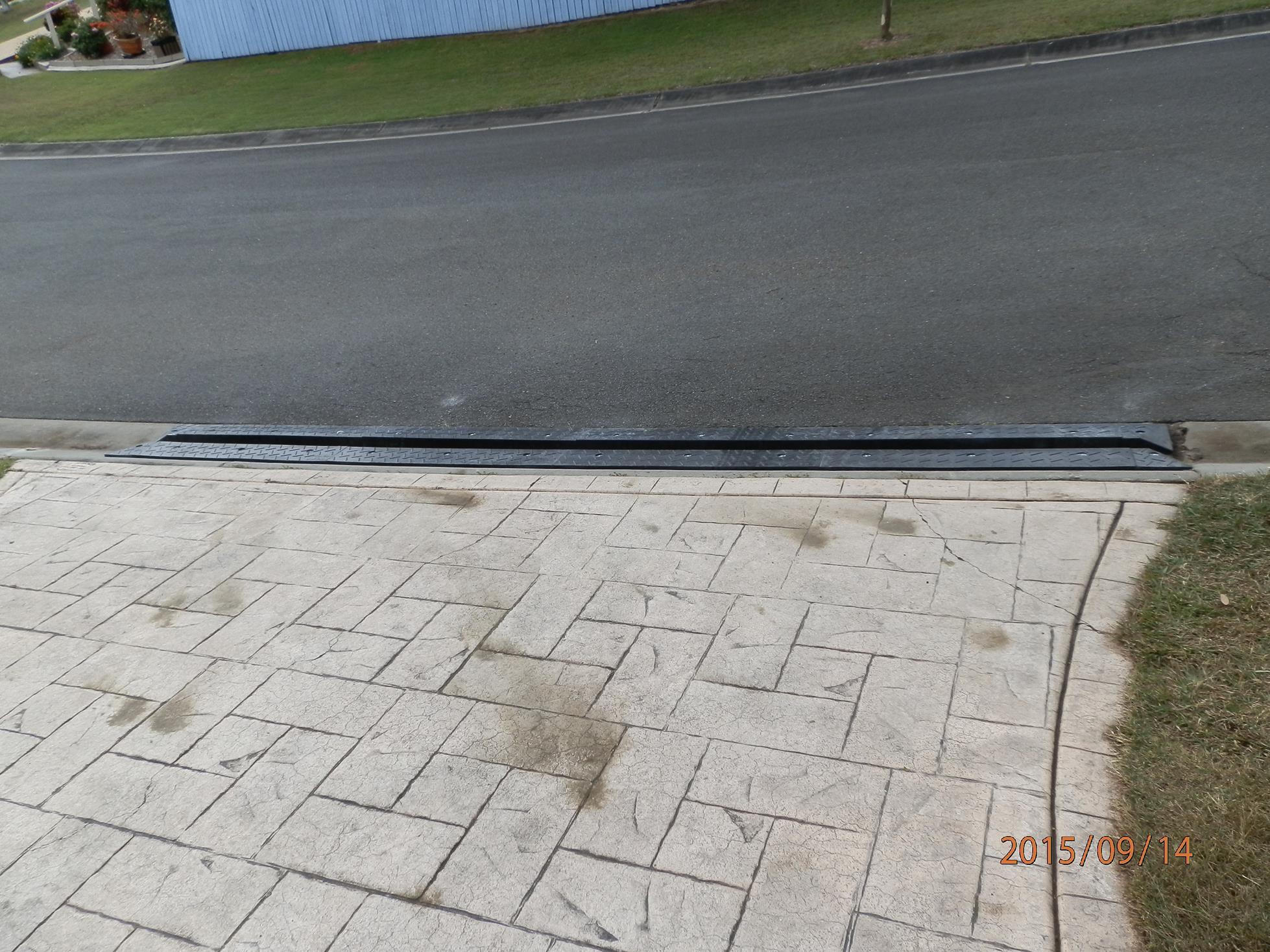
Although slim, given a driveway built to legal standards (6:1 gradient ratio), most common low car clearance of not less than 130mm and if the tyres of your car can get to the ramp without scrapping, our ramps will prevent bottom scrapes.
Is a permit required to install these ramps ?
Although these ramps conform to the standards required by many local councils, the question is whether a permit is required to install them.
We asked a council this and was told they preferred an application be put in.
It is up to buyers to check and confirm whether any permits are required to install these ramps.
An alternative ?
If your council does not approve an application to install our Type L ramps as per the suggested installation method, then there is no other ramp solution available. You will have to cut, shape and re-concrete your driveway and kerb.
Footnote ***
A 150mm drainage gap is actually really wide. There are many downsides. Some council(s) are not as particular about this. We suggest 125 to 130mm which still offers a huge drainage gap.
